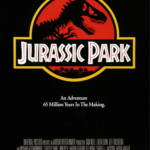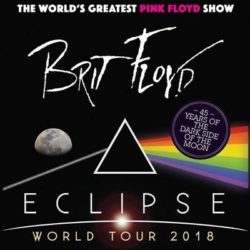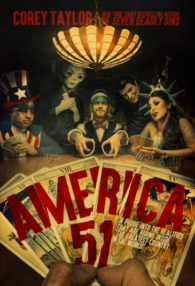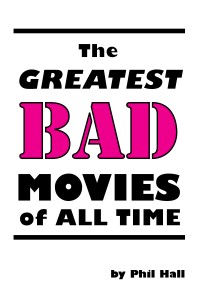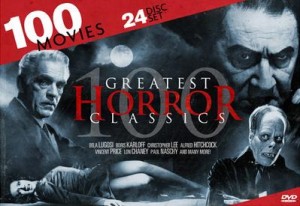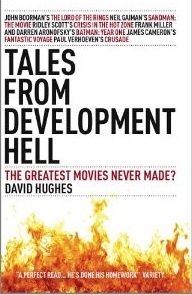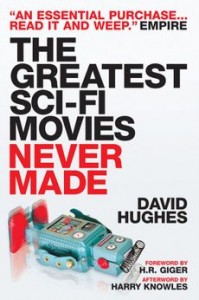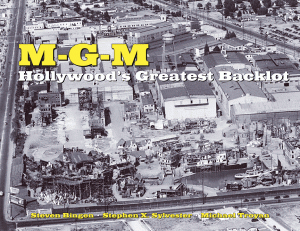Starring: Vincent PRice, Boris Karloff, Bela Lugosi, Lon Chaney Jr., Christopher Lee and Alfred Hitchcock
Number of discs: 24
Distributed by: Mill Creek Entertainment
MPAA Rating: Not Rated
Release Date: July 10, 2012
Running Time: 7600 minutes
Our Score: 4 out of 5 stars
When I saw this release titled “100 Greatest Horror Classics”, I had no choice but to request it to review. It just screams my name. Being a horror buff, I love all things horror and that including this. This release is split into two sets of 50 films including “Horror Classics” and “Legends of Horror”. Let me start by telling you they are not the best transfers of these films but nonetheless, they are 100 of horror greatest films together in one place and that is enough for me. The packaging could have used a little extra loving as the each set includes a jumbo DVD case, both which are held together by one long slipcover. Inside each DVD case are individual DVD sleeves with 12 dual discs. There are two films per side/per disc, obviously totally 50 films per set. I suggest you pick a rainy day put in disc 1 and have yourself a day-long marathon.
So before you get overwhelmed the fact that there are 100 films to watch. Let me throw out a quick number…7600. That is the amount of minutes of horror greatness included in this set. If that doesn’t make you run out and pick this up then nothing will. This release even includes a few films that I have never heard of or seen, so I was very excited about that as well. Mill Creek Entertainment is known for releasing these amazing box sets. They also have a sci-fi themed release as well that I am looking forwarding to reviewing called “100 Greatest Sci-Fi Classics – Sci-Fi Classics + Sci-Fi Invasion”. Keep a look out for that review as well. From cinematic greats to genuine obscurities, this wonderful collection of films easily offer months of entertainment in a single release.
While I not going to give an individual review for each film, as I sure you’ve seen these films already. I will point on some of the notable titles that I really enjoyed. I grew up watching the following titles: The Brain That Wouldn’t Die (1962), Carnival of Souls (1962), Dementia 13 (1963), Horror Express (1972), House on Haunted Hill (1959), The Last Man on Earth (1960), The Little Shop of Horrors (1960), Metropolis (1927), Night of the Living Dead (1968), Nosferatu (Silent) (1922) and of course The Phantom of the Opera (Silent) (1925). I am very happy to be able to have them all in one place. I also am looking forward to introducing all of these titles to my own daughter…but not for a few years since she is only three months currently. I will be re-visiting these titles quite often and I look forward to future installments.
Here are the complete list of the 100 titles including in this fantastic release:
Alfred Hitchcock Presents: The Chaney Vase (1955)
Alfred Hitchcock Presents: The Sorcerer’s Apprentice (1961)
The Amazing Mr. X (1948)
The Ape (1940)
The Ape Man (1943)
Atom Age Vampire (1960)
Attack of the Giant Leeches (1959)
The Bat (1959)
The Beast of Yucca Flats (1961)
The Black Dragons (1942)
Blackmail (1929)
Bloodlust (1959)
Bluebeard (1944)
The Bowery at Midnight (1942)
The Brain That Wouldn’t Die (1962)
Carnival of Souls (1962)
Champagne (Silent) (1928)
The Corpse Vanishes (1942)
Count Dracula and His Vampire Bride (1974)
Creature from the Haunted Sea (1961)
Crimes at the Dark House (1940)
The Crimes of Stephen Hawke (1936)
Dead Men Walk (1943)
Dementia 13 (1963)
The Demon (1979)
The Devil Bat (1940)
The Devil’s Messenger (1962)
Doomed to Die (1940)
Dr. Jekyll and Mr. Hyde (Silent) (1920)
Easy Virtue (Silent) (1926)
The End of the World (1977)
The Face at the Window (1939)
The Farmer’s Wife (Silent) (1928)
The Fatal Hour (1940)
The Fury of the Wolf Man (1972)
The Ghost (1963)
The Giant Gila Monster (1959)
The Gorilla (1939)
Horror Express (1972)
House on Haunted Hill (1959)
The Hunchback of Notre Dame (Silent) (1923)
The Incredible Petrified World (1957)
The Indestructible Man (1956)
The Invisible Ghost (1941)
The Island Monster (1954)
It’s Never Too Late to Mend (1937)
Jamaica Inn (1939)
Juno and the Paycock (1930)
The Killer Shrews (1959)
King of the Zombies (1941)
The Lady Vanishes (1938)
The Last Man on Earth (1960)
The Last Woman on Earth (1960)
Legacy of Blood (1971)
The Little Shop of Horrors (1960)
The Lodger (Silent) (1926)
The Long Hair of Death (1964)
The Mad Monster (1942)
The Man Who Knew Too Much (1934)
Manfish (1956)
Maniac (1934)
The Manxman (Silent)
Metropolis (1927)
Monster from a Prehistoric Planet (1967)
The Monster Maker (1944)
The Monster Walks (1932)
Murder in the Red Barn (1935)
Night of the Living Dead (1968)
Nightmare Castle (1965)
The Nightmare Never Ends (1980)
Nosferatu (Silent) (1922)
Number Seventeen (1932)
One Body Too Many (1944)
The Phantom Creeps (1939)
The Phantom from 10,000 Leagues (1956)
The Phantom of the Opera (Silent) (1925)
Revolt of the Zombies (1936)
Rich and Strange (1932)
The Ring (Silent) (1927)
Sabotage (1936)
A Scream in the Night (1935)
The Screaming Skull (1958)
Secret Agent (1936)
Shadow of Chinatown (1936)
The Shadow of Silk Lennox (1935)
The She-Beast (1966)
Shock (1946)
A Shriek in the Night (1933)
Silent Night, Bloody Night (1974)
The Skin Game (1931)
Swamp Women (1955)
The Terror (1963)
The Thirty-Nine Steps (1935)
The Ticket of Leave Man (1937)
Tormented (1960)
The Vampire Bat (1933)
The Werewolf vs. Vampire Women (1971)
White Zombie (1932)
The World Gone Mad (1933)
Young and Innocent (1937)
